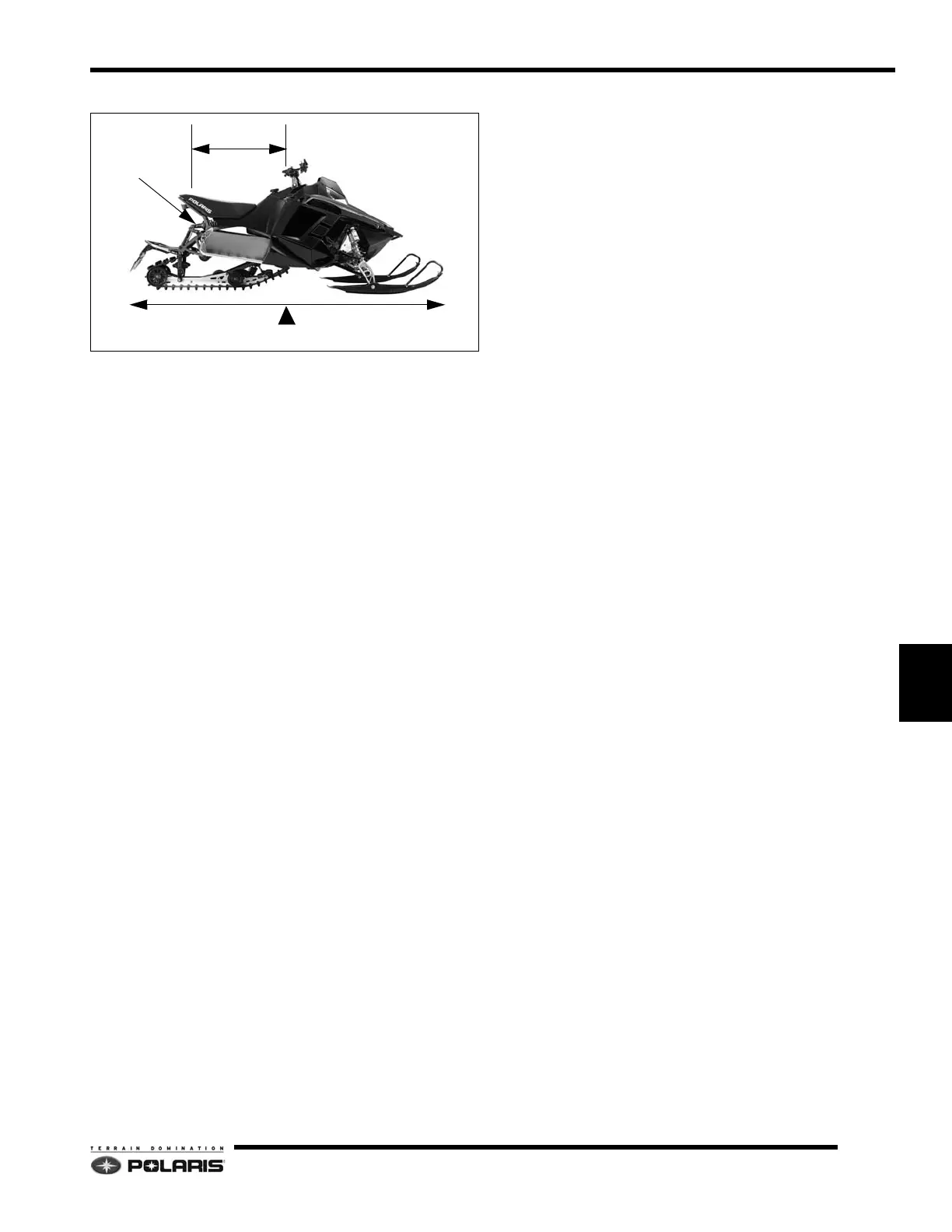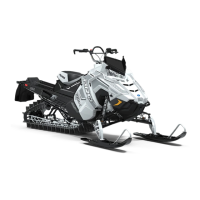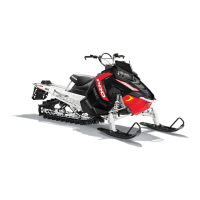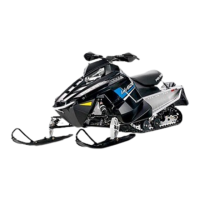8.73
Steering and Suspensions
8
STEP 2 - FINE TUNE THE BALANCE
The Pro-Ride Progressive rear suspension allows the
r
ider to fine tune the balance of the snowmobile depending
on the driver’s riding style and trail conditions. Balance
control is accomplished both mechanically and by the
driver.
Mechanical balance adjustment involves increasing or
d
ecreasing the rear track spring preload from the base
setting established in step one. Fine tuning the balance
should only be done after riding the snowmobile.
Adjustments should always be performed in small
increments.
NOTE: Turn the spring adjuster one full turn at a
t
ime and then ride the snowmobile taking note of
any changes.
Increasing spring preload one full rev
olution at a time will
shift the snowmobile balance to the front and result in
increased ski pressure with less weight transfer for flatter
cornering and more precise steering.
Riders who sit or stand at the rear of the seat or experience
p
ush through corners may want to increase rear track
spring preload.
Decreasing spring preload one full revolution at a time will
shif
t the snowmobile balance to the rear and result in
decreased ski pressure with more weight transfer during
acceleration.
Riders who sit or stand close to the fuel tank, when riding
on
loose snow with little traction, or when steering effort is
too high may want to decrease rear track shock spring
preload.
Rider-active balance control involves adjustments in rider
po
sition and/or rider weight distribution when turning,
encountering bumps/road approaches, or during
acceleration/braking. Rider-active balance control can
affect the snowmobile balance just as much as adjusting
the rear track spring preload.
For example, riders wanting less inside ski lift during
co
rnering, but maximum traction during acceleration can
shift their body position/weight towards the front and into
the turn and then shift their body position/weight rearward
when exiting and accelerating out of the turn.
Likewise, riders who use a less
active riding position may
want to only adjust the rear track spring preload to achieve
similar results.
Remember that while the Pro-Ride progressive rear
su
spension can be adjusted to satisfy all types of riders
and riding styles, it is unlikely that one rider’s setup will
provide similar results for a different rider.
Always reset the rear track shock preload and shock
co
mpression dampening settings when a new driver rides
the snowmobile.
KEY POINTS/RECOMMENDATIONS
• Increasing rear track shock spring preload shifts
the snowmo
bile balance forward
• Decreasing rear track shock spring preload shifts
the snowmo
bile balance rearward
• Always begin suspension setup by setting the rear
track
shock spring preload to the rider’s weight in
everyday street clothes.
• Make small adjustments when tuning the
suspen
sion settings
• Ride the snowmobile after making each change
an
d take note of the results of each change
• Make ride position and weight distr
ibution (sit at
the rear of the seat or close to the fuel tank, lean
into turns, etc.) changes while riding and take note
of the results
• Ride the snowmobile on v
arious trail conditions
and take note of the results
• Adjusting spring preload controls balance,
ad
justing the compression or rebound (if
equipped) clickers controls comfort
• Verify the track tension is
set to specification
STEP 3 - ADJUSTING RIDE COMFORT/QUALITY
NOTE: Step 3 applies to shocks equipped with
compre
ssion and/or rebound adjusters.
After performing steps one and two, the last step in
adju
sting the snowmobile’s suspension is to adjust the
ride comfort.
Ride comfort/quality is contr
olled by the remote shock
compression dampeners.
BALANCE
MORE TRACTION MORE SKI PRESSURE
LESS SKI PRESSURE LESS TRACTION
RIDER ACTIVE
SPRING PRELOAD

